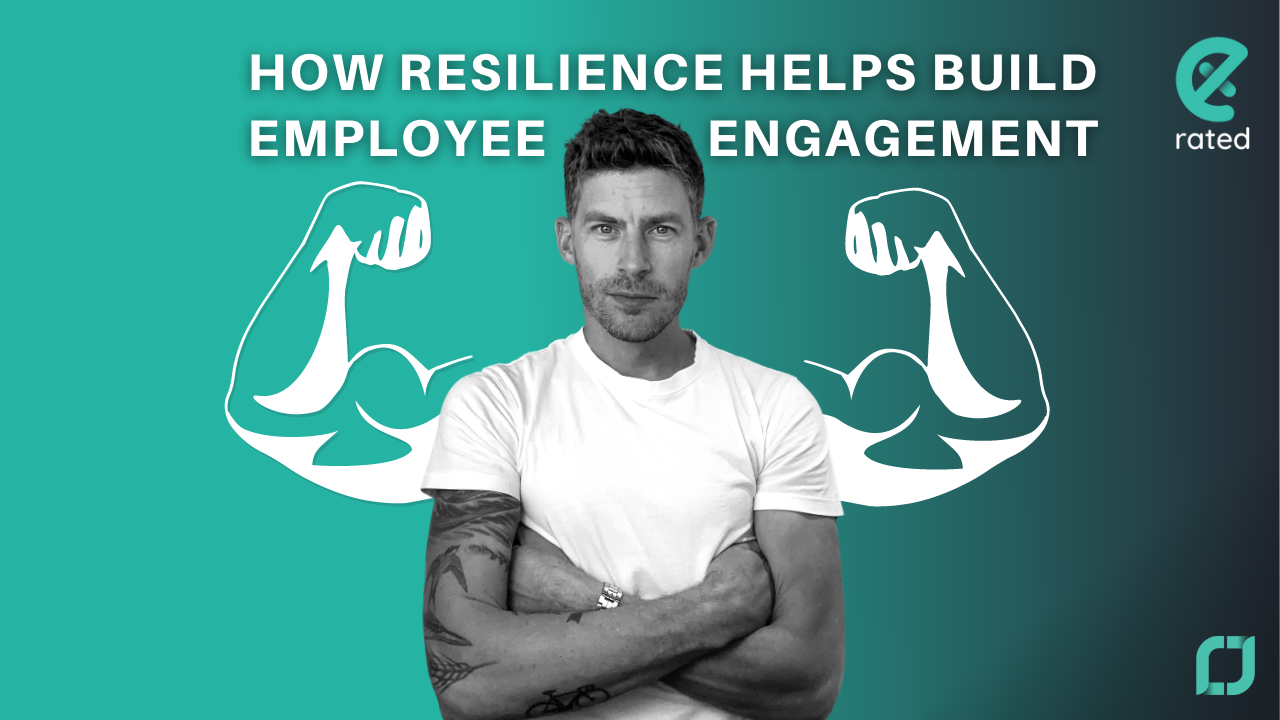Mar27

I believe the level of an employee's resilience can have a significant impact on their level of engagement. Resilience is essentially an individual's ability to recover quickly from setbacks, adapt to change, and overcome adversity. When employees are resilient, they are better equipped to handle the stresses and challenges of the workplace, which I believe can positively affect their engagement.
Because they are better able to manage their emotions and maintain a sense of control, even in challenging situations resilient employees are more likely to have a positive attitude towards their work and the organisation they work for. In my time managing people I also noted that those who were more resilient were able to better identify opportunities for improvement and take action to address issues. This proactive behaviour helps build an employee's sense of autonomy which is a key ingredient to engagement.
Training employees to be resilient involves providing them with the necessary tools, resources, time, space, and support to develop the skills and mindset needed to overcome challenges and adversity.
I suggest starting with educating employees on the importance of resilience, what it means, and how it can benefit them. Provide examples of how other people have demonstrated resilience in the workplace and the positive outcomes that resulted from it. Then ensure employees are provided with the time and space to reflect on their own levels of resilience and identify areas where they can improve. This could involve taking assessments or engaging in exercises to develop self-awareness and identify areas for growth.
Foster a positive workplace culture (easier said than done, I know) but in short what that looks like is an environment that promotes positive relationships, open communication, and mutual support. It encourages employees to share their experiences, offers support to each other, and recognises and celebrates achievements (a sense of achievement, again a building block for engagement).
Explore how you can provide resources for stress management and by offering training to help employees manage stress. This might include mindfulness techniques, breathing exercises, and time management strategies and if none of that is possible at a minimum encourage employees to take breaks and practice self-care.
Like confidence, resilience is a skill, not a trait and therefore needs coaching. I also feel that the two often go hand-in-hand. Therefore, provide opportunities for employees to develop new skills, acquire knowledge, and expand their professional networks. This can help employees build confidence and increase their ability to adapt to change and overcome challenges.
Finally, if you are a leader you have to model resilient behaviour. Show how to overcome challenges and setbacks and inspire employees to develop their own resilience skills.
Assessing the resilience of a person and evaluating their ability to cope with and overcome challenges and adversity is not always easy so here are some things I have found helpful.
There are various self-report questionnaires that can be used to assess an individual's resilience. These questionnaires often consist of a series of questions that ask about the person's ability to cope with stress, adapt to change, and recover from setbacks. (reach out to me if you want some specific tools).
Psychometric tests, such as the Resilience Scale, can be used to measure a person's level of resilience. These tests often consist of a series of scenarios that assess the person's ability to cope with stress, adapt to change, and bounce back from setbacks.
Interviews with the person may not give you the most accurate of answers to this so if you’re allowed/able to interview their colleagues, or manager can provide better insights into how they have responded to challenging situations in the past (think Johari’s window), as well as their coping strategies and what support networks they draw upon.
If however, the person is already in the business the best way by far is still through observing how a person responds to challenges and setbacks. For example, observing whether a person can maintain a positive attitude, remain motivated, and persevere in the face of obstacles can provide clues about their resilience.
The last few years have either broken or strengthened or at minimum tested our resilience. I for one know my resilience was tested like never before in my life. I realised that resilience is like a muscle. Without exercise, it loses its strength. So even if in the past (like me) it was something you were proud of and were good at, doesn't mean you still are. Moments that really challenge your resilience don’t come around every day so if you don’t continue to be mindful and self-aware of your resilience you may find when that challenge arises you have lost a little resilience strength.
I would love to hear how you practice mindfulness, and how you measure your own resilience.
Until next time and as always
Hooroo.
Keywords: Culture, Customer Experience, Future of Work
 Autonomous Wingmen: Scaling Sustainable Aviation via NVIDIA NAT and Formation Flight
Autonomous Wingmen: Scaling Sustainable Aviation via NVIDIA NAT and Formation Flight The Board Chair as the Primary Lever of Psychological Safety
The Board Chair as the Primary Lever of Psychological Safety Friday’s Change Reflection Quote - Leadership of Change - Change Leaders Maintain Trust and Legitimacy
Friday’s Change Reflection Quote - Leadership of Change - Change Leaders Maintain Trust and Legitimacy The Corix Partners Friday Reading List - January 16, 2026
The Corix Partners Friday Reading List - January 16, 2026 Effective Government Is Built: A Five-Pillar Framework for Public Leaders
Effective Government Is Built: A Five-Pillar Framework for Public Leaders